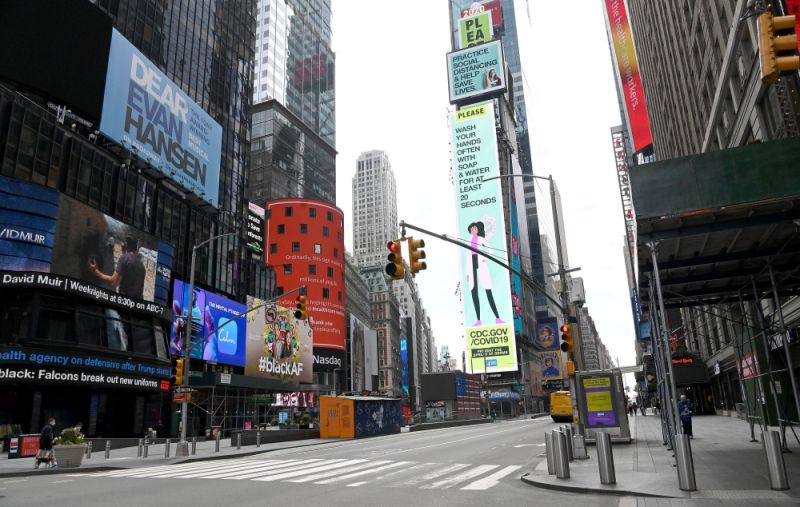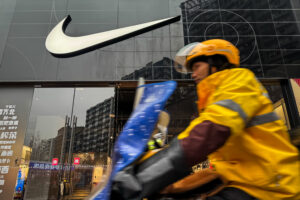
(Bloomberg Opinion) — There is no safe way to emerge from our collective shelter-in-place orders and restart the economy before an effective Covid-19 vaccine arrives — but there are smart, science-based ways to do it.
The question can’t be left entirely up to experts. It’s not a safety problem so much as an ethical one; many of us would accept a certain risk of death for the chance to return to a more fully lived life. But putting ourselves at risk means putting others at risk — and some are much more likely to die.
That said, scientific facts, clearly communicated, can help us make an informed decision about when to re-open. And as to that, experts have some good ideas. Former CDC director Tom Frieden laid out some in a recent virtual press conference. Now CEO of a public health initiative called Resolve to Save Lives, he and his colleagues have come up with three criteria to determine when we can regain our freedom.
First is evidence that infection rates are going down even as testing is increasing. There are signs this is close to happening in California, and New York may not be far behind. Cases are still on the rise in many other states, but there’s good reason to think social distancing measures will turn that around in late April and May. (The Frieden plan would also call for a new phase of shelter in place if cases start to rise enough to again threaten to swamp the healthcare system.)
The next requirement is creation of testing and contact tracing infrastructure on a massive scale, so that everyone who feels symptoms can get tested, and anyone else who came into contact with them can, too.
The final piece is a stronger health care system. That means every hospital’s staff must have adequate masks and other protective gear, and every hospital must have capacity to deal with a quick doubling of intensive care patients. We’ll also need new health care facilities for homeless people and others who are not equipped to recover at home if they get sick but don’t require hospitalization.
The importance of preparing the health care system can’t be underestimated, says Purdue virology professor David Sanders. That means preparing all health care workers, not just the ones treating Covid-19 patients. A certain number of people coming to doctors or hospitals for other reasons will be infectious, putting doctors or nurses at risk of picking up the virus and spreading it to other patients. Nursing homes, too, will have to implement changes that make it less likely for the virus to spread among residents.
Testing 5–10 million people every single day is the crux of a similar plan devised by a group of academics headed by Harvard political science and ethics professor Danielle Allen. It’s expensive for sure, but less expensive than staying confined to our homes or allowing the virus to ravage the country, Allen and her collaborators say. Economist Rajiv Sethi, one of the architects of that plan, said that regular testing should start with health care workers, people in the food industry and sanitation workers before being extended to the general population.
Testing would be combined with contact tracing — done at least partly through smartphone tracking, says Sethi, who is a professor at Barnard College, Columbia University and an external professor at the Santa Fe Institute. Singapore and several other countries are already doing this, and last week Apple and Google announced plans to create a Bluetooth-based contact tracing app. In theory, once a person tests positive, the system could alert everyone that person recently came into close contact with. Those people could then quickly get tested.
With all of these plans, the timing depends on how much the federal government can commit to them.
Another possibility, without such a massive investment in testing and contact tracing, is intermittent social distancing. In a paper published Tuesday in Science, Harvard epidemiologist Marc Lipsitch and colleagues examined how that might play out. If we’re lucky and people who’ve had the infection remain immune for a year or more, relaxing social distancing over the summer would have the advantage of building up some herd immunity — lessening future spread by reducing the number of susceptible hosts. Still, another big peak would probably appear in the fall, especially if there is some seasonal variation, and so we’d need good surveillance to start the next phase of social distancing early. Such intermittent periods of social distancing might go on until 2022 barring a vaccine or big advances in treatment.
Peter Sandman, a risk communication consultant who showed foresight in early February, says in an email that we also need better public understanding. Many people don’t really understand why we’re sheltering in place. If you ask them, they’ll say something about flattening the curve, but when you press on what that means, he said, “they get hazy.”
They think they’re unlikely to get sick if we re-open at the right time and they follow the expert advice on hand washing. “That would be mistaken,” he says. Scientific advances may help future infection and death rates, as we learn more about how the disease is spread, how much immunity people retain after infection, and which treatment options work best for the severely ill. But people will get infected no matter when we re-open the country, and some of them will die. That needs to be understood.
Keeping the economy locked down isn’t “safe” either, says Sandman. Somewhere, someone is not getting a malignant breast tumor checked, and someone who lost a job will commit suicide.
Conversely, reopening the economy doesn’t mean going back to business as usual. There will be businesses that don’t exist anymore, warns economist Sethi. People will have to retrain for different kinds of jobs. We’ll be restarting an economy, but it won’t be the same economy.
Frieden, in unveiling his science-based plan, quipped that it had to be about data, not dates. But Allen’s group, informed by ethics and economics, points out that it’s bad for morale and businesses to quarantine people indefinitely.
Ultimately, the choice of when to reopen one is not a scientific question, but a moral one informed by science: how much coronavirus risk are we willing to accept?
This column does not necessarily reflect the opinion of Bloomberg LP and its owners.
Faye Flam is a Bloomberg Opinion columnist. She has written for the Economist, the New York Times, the Washington Post, Psychology Today, Science and other publications. She has a degree in geophysics from the California Institute of Technology.
<p class="canvas-atom canvas-text Mb(1.0em) Mb(0)–sm Mt(0.8em)–sm" type="text" content="For more articles like this, please visit us at bloomberg.com/opinion” data-reactid=”42″>For more articles like this, please visit us at bloomberg.com/opinion
<p class="canvas-atom canvas-text Mb(1.0em) Mb(0)–sm Mt(0.8em)–sm" type="text" content="Subscribe now to stay ahead with the most trusted business news source.” data-reactid=”43″>Subscribe now to stay ahead with the most trusted business news source.
©2020 Bloomberg L.P.





